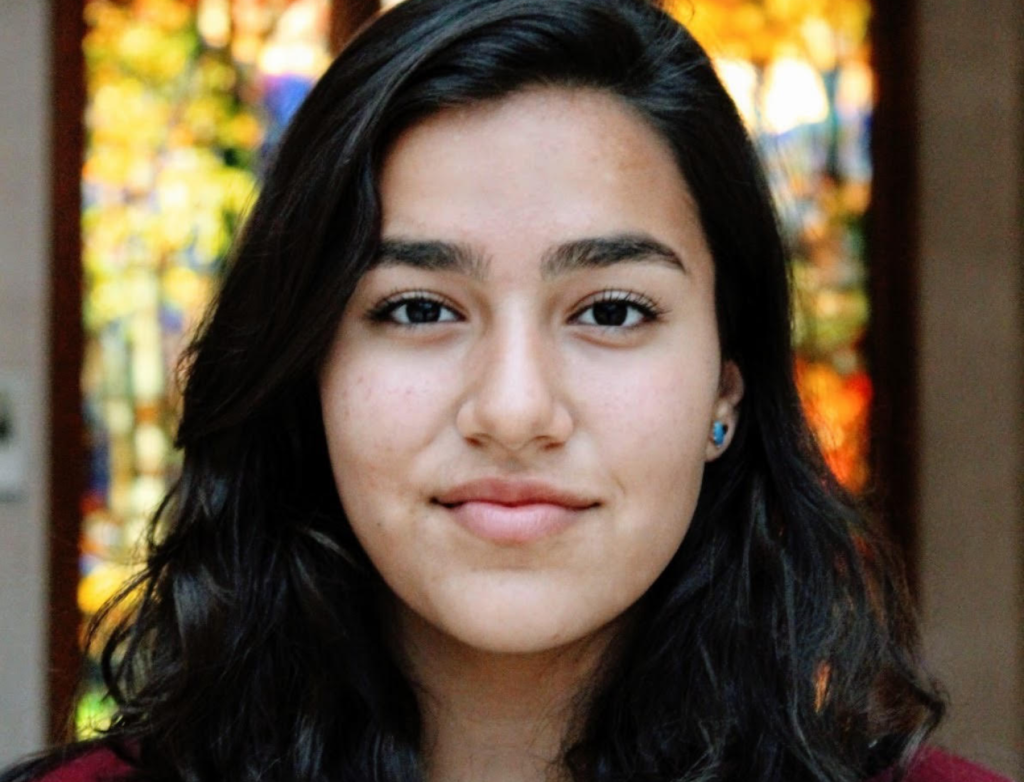Exploring new skills in a high school CubeSat program
A conversation with Rojan Javaheri, USC student and former Irvine CubeSat team captain

In her first year of high school, Rojan Javaheri learned about the Irvine CubeSat STEM Program, a joint educational endeavor with Irvine Public Schools Foundation (IPSF) to teach, train, and inspire the next generation of STEM professionals using CubeSats. She spent four years in the program building and launching a CubeSat into low Earth orbit with her team, eventually becoming the team captain.
Rojan is now a second-year student at the University of Southern California, where she’s studying neuroscience. She continues to work as a program designer with CubeSats on campus and as a mentor for middle school girls interested in STEM fields. We spoke with Rojan about what she learned with Irvine CubeSat and why she still loves working with CubeSats.
Take us back to high school. You were part of Irvine’s CubeSat program for four years. What did you do?
I started working with CubeSats the first year they started at Irvine. One of the technology teachers came into our biology class and talked about it, so I decided to join. I’ve been interested in space since I was little, and I thought it was really cool that we were going to be launching an actual satellite into space.
For our first project, we wanted to take pictures of celestial bodies. Our CubeSat is facing away from the Earth so we can take pictures of planets and stars. We wanted to use something called parallax to measure the distance to whatever celestial bodies we’re taking a picture of.
My team was called Team Prime, and we were the management team. We had to work with the CubeSat frame and the main payload. The first year, we worked with the camera, which was supposed to take pictures of planets and stars. And we also did a lot of paperwork, including the NASA paperwork for launch — we worked on that for almost half of the year. We had to compile a lot of data from all the teams into one document, then ask NASA to give our CubeSat a ride to space. We also had to submit the paperwork for NOAA, the National Oceanic and Atmospheric Administration, to get permits for going to space and taking pictures of outer space.
In the four years I worked on the project, I had to work with more than 100 people, making sure we were all doing our part. It’s a lot of management. By the end of my senior year, I was a team captain — I got to help other students and bring new members into the CubeSat community.
What did you expect to learn when you joined? And what did you actually get out of it?
When I joined, I thought it would be so much technical work, like learning to program. I was never a person who wanted to go into engineering, and CubeSats are considered to be a STEM thing. Yes, I learned about really technical things, but I found out there are more than just engineering aspects.
The biggest things I learned were teamwork and leadership and working with other people. It was important to have really good communication skills; I had to talk with a lot of students from different high schools to get information about what they were working on.
The CubeSat program changed the way I viewed school. It allowed me to work outside of the classroom with a lot of different people and companies that I would’ve never been able to meet otherwise. I got to give speeches to judges from the NASA Jet Propulsion Laboratory, NASA Goddard, and Boeing. We visited Google. In my first year, we went to the CubeSat Developers Workshop, and learned about professionals and companies working with satellites. It introduced me to such a big community.
You’re now working with middle schoolers. What would you say to schools that are just getting started with CubeSats?
I’m working with middle schoolers right now, in a program called Project Payload, helping them build a satellite. We’ve taught them a lot of communication and leadership skills, as well as a lot of STEM educational skills like working with Arduino, which is a board for programming. They’ve learned a lot. They’re going to be doing a high-altitude balloon launch.
Students love CubeSat programs. I really like how CubeSat projects integrate students into the process, rather than just mentors or teachers helping every step of the way. Such a big part of it is that you make it up as you go. There’s no procedure for how to do everything, so, a lot of it is based on the students leading the way and figuring out what we’re going to do next.
The skills that students gain from learning and building the prototype are skills that they’re going to be using later on in their lives. The skills they have gained are transferable — even if they aren’t interested in STEM fields. So, I would definitely recommend a CubeSat project to anybody who’s interested at all.
Build technical skills for careers in space and beyond
Designing and building a CubeSat prototype offers students a firsthand opportunity to learn valuable technical skills — such as engineering, computer science, research, logistics, project management, and marketing — that can be applied to careers in aerospace and many other industries. Form a team and submit a mission proposal by 5:59 p.m. ET on October 16 to enter CTE Mission: CubeSat — no in-person collaboration or prior experience with CubeSats is required.
Sign up for challenge news
To receive challenge updates, subscribe to the CTE Mission: CubeSat newsletter.

